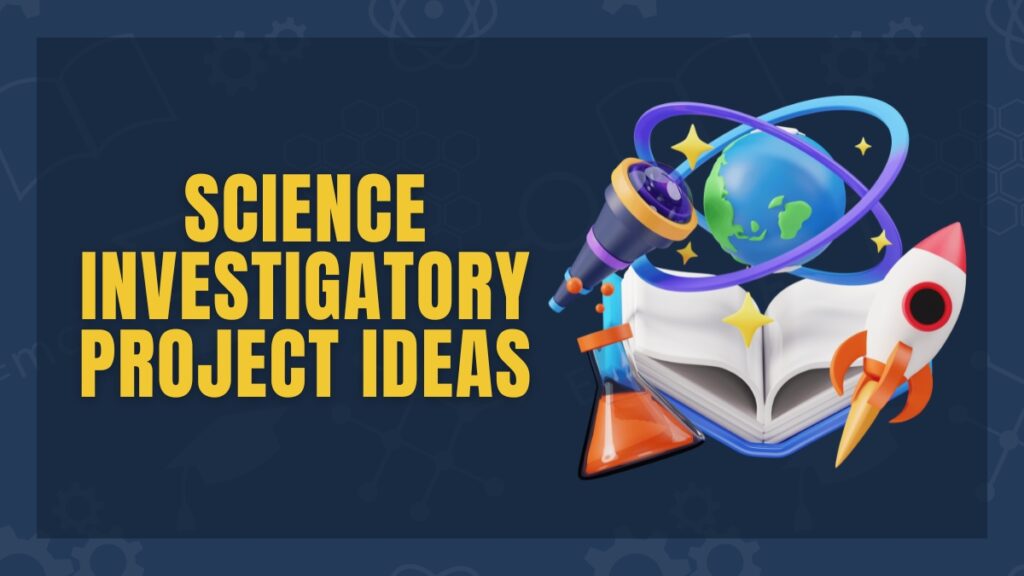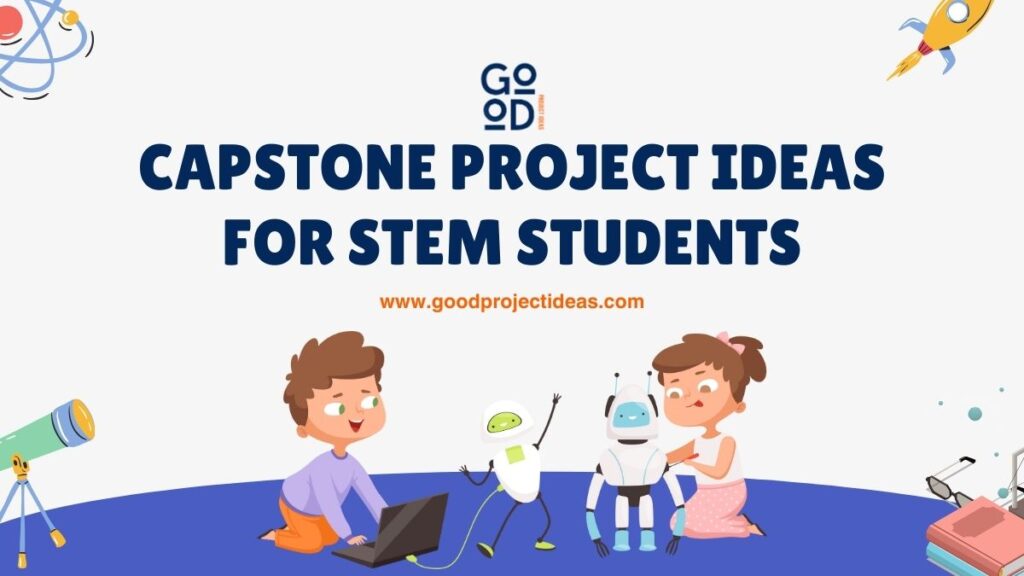Discover exciting and engaging science investigatory project topics! Explore a variety of ideas across different fields, perfect for science fairs or personal exploration. Find inspiration and kickstart your next project today!
Want to dive into a science project that’s both fun and fascinating? Science investigatory projects let you explore new ideas and discover cool stuff.
In this blog, we’ll share awesome science project topics across different fields. From climate change to space, find something that excites you and get ready to explore! Let’s jump into some great ideas and get your project rolling.
Science Investigatory Project Topics PDF
Science investigatory project topics pdf
Definition of Science Investigatory Projects
Science investigatory projects are student-led experiments that test scientific ideas. They involve:
- Question: What you want to find out.
- Hypothesis: Your educated guess.
- Experiment: Testing your hypothesis with a systematic approach.
- Analysis: Looking at the results to see if they support your guess.
- Conclusion: Summarizing what you learned.
These projects help students learn scientific methods and develop problem-solving skills.
Why Choose a Science Investigatory Project?
Checkout the best tips to choose a science investigatory project
Hands-On Learning
- Perform experiments to understand scientific principles.
- Build models or conduct reactions.
- Observe real-world processes with hands-on projects.
Critical Thinking
- Test and solve problems.
- Analyze information and draw conclusions.
- Engage in puzzles and discussions.
Creativity
- Explore new solutions and ideas.
- Design unique experiments or projects.
- Represent science in artistic ways.
Skill Building
- Learn research and analysis techniques.
- Improve presentation and communication skills.
- Practice writing reports and giving talks.
Scientific Method
- Ask questions and form hypotheses.
- Conduct experiments and collect data.
- Analyze results and share findings.
These projects make science engaging and help you build essential skills!
Key Elements of a Successful Science Investigatory Project
Check out the key elements of a successful science investigatory project:-
Clear Objective
- Define what you want to investigate.
- Identify the specific problem or question.
- Ensure the objective is focused and clear.
Detailed Hypothesis
- Formulate a testable prediction.
- Develop a hypothesis that is specific, measurable, and testable.
- Ensure the hypothesis directly addresses the research question.
Structured Plan
- Outline your experiment steps and procedures.
- List all materials and tools needed.
- Define the variables (independent, dependent, and controlled).
- Create a step-by-step procedure for the experiment.
Accurate Data Collection
- Gather and record data precisely.
- Use reliable tools and methods for data collection.
- Record observations and measurements systematically.
- Ensure data is collected consistently.
Thorough Analysis
- Interpret results and draw conclusions.
- Analyze the data to see if it supports the hypothesis.
- Use statistical methods to interpret the results.
- Consider anomalies or unexpected results in the analysis.
Effective Presentation
- Communicate findings clearly and concisely.
- Organize results using graphs, charts, and tables.
- Present conclusions that are directly supported by the data.
- Ensure clarity and conciseness in the presentation.
Proper Documentation
- Keep detailed records of your work and results.
- Document every step, from objective to conclusion.
- Include methodology, data, analysis, and findings.
- Ensure the documentation is thorough and organized.
These elements ensure your project is well-organized, insightful, and impactful.
Science Investigatory Projects
Check out science investigatory projects:-
Environmental Science
Water Quality
- Test Parameters: pH, turbidity, contaminants.
- Analysis: Use water testing kits or lab analysis.
- Impact: Assess effects on aquatic life and human health.
Plastic Waste
- Types of Plastics: Biodegradable vs. conventional.
- Decomposition Rates: Measure time for breakdown.
- Environmental Impact: Study effects on wildlife and ecosystems.
Air Pollution
- Emissions: Source identification (vehicles, industries).
- Measurement: Use air quality monitors.
- Control Methods: Propose solutions (filters, regulations).
Soil Fertility
- Fertilizers: Compare organic vs. chemical.
- Soil Testing: Nutrient levels and plant growth.
- Impact: Assess effects on crop yield and soil health.
Ecosystem Restoration
- Methods: Replanting, erosion control.
- Success Indicators: Biodiversity, soil stability.
- Challenges: Address difficulties in implementation.
Climate Change
- Species Affected: Identify local species at risk.
- Impact Analysis: Changes in behavior, migration.
- Mitigation Strategies: Propose adaptation measures.
Energy Conservation
- Techniques: Insulation, efficient appliances.
- Testing Methods: Compare energy use before and after.
- Benefits: Cost savings, environmental impact.
Biodiversity
- Preservation Methods: Protected areas, conservation programs.
- Measurement: Species count, habitat health.
- Challenges: Address threats like habitat loss.
Waste Reduction
- Recycling: Effectiveness of different materials.
- Composting: Compare composting methods.
- Community Impact: Measure waste reduction in local areas.
Green Roofs
- Benefits: Insulation, reduced heat island effect.
- Construction: Materials and design.
- Evaluation: Performance in reducing energy costs.
Chemistry
Natural pH Indicators
- Sources: Red cabbage, beet juice.
- Testing: Compare with commercial indicators.
- Applications: Use in educational experiments.
Chemical Reactions
- Variables: Temperature, concentration.
- Data Collection: Measure reaction rates.
- Analysis: Determine optimal conditions.
Essential Oils
- Extraction Methods: Steam distillation, cold pressing.
- Yield and Quality: Compare efficiency and purity.
- Applications: Use in cosmetics or aromatherapy.
Water Purification
- Techniques: Filtration, distillation.
- Effectiveness: Test for contaminants.
- Cost Analysis: Compare costs of methods.
Corrosion Prevention
- Coatings: Paints, galvanization.
- Testing: Rate of rust formation.
- Application: Use in industrial settings.
Acid-Base Titration
- Procedure: Steps for titration.
- Accuracy: Compare with theoretical values.
- Applications: Determine concentrations in solutions.
Catalyst Effectiveness
- Types: Enzymes, metal catalysts.
- Testing: Measure reaction speeds.
- Applications: Industrial processes.
Food Chemistry
- Cooking Effects: Temperature on texture and flavor.
- Chemical Changes: Maillard reaction, caramelization.
- Taste Testing: Evaluate sensory differences.
Environmental Chemistry
- Pollutants: Types and sources.
- Impact: Effects on air, water, soil.
- Mitigation: Strategies for reducing pollution.
Biopolymer Production
- Types: Starch-based, protein-based.
- Properties: Strength, biodegradability.
- Applications: Use in packaging or medical products.
Biology
Plant Growth
- Light Conditions: Natural vs. artificial light.
- Growth Measurement: Height, leaf count.
- Photosynthesis Rates: Measure chlorophyll content.
Microbial Contamination
- Disinfectants: Compare effectiveness.
- Testing: Use petri dishes to culture bacteria.
- Application: Evaluate in various environments.
Genetic Traits
- Inheritance Patterns: Dominant vs. recessive traits.
- Punnett Squares: Predict outcomes.
- Experimentation: Use model organisms like peas.
Enzyme Activity
- Factors: Temperature, pH, concentration.
- Measurement: Rate of reaction.
- Applications: Use in industrial processes or health.
Human Anatomy
- Exercise Impact: Heart rate, blood pressure.
- Data Collection: Use fitness trackers.
- Health Implications: Long-term benefits of exercise.
Photosynthesis
- Conditions: Light intensity, CO2 concentration.
- Measurement: Oxygen production.
- Effects: On plant growth and health.
Pollination
- Pollinators: Bees, butterflies.
- Effectiveness: Compare pollination rates.
- Impact: On crop yields and biodiversity.
Antibiotic Resistance
- Resistance Development: Mechanisms and causes.
- Testing: Measure effectiveness of different antibiotics.
- Public Health: Address spread of resistance.
Ecological Relationships
- Predator-Prey Dynamics: Study interactions.
- Impact: On ecosystem balance.
- Case Studies: Use local or model species.
Cellular Respiration
- Factors: Temperature, substrate availability.
- Measurement: CO2 production.
- Applications: Use in bioenergy research.
Physics
Renewable Energy
- Types: Solar, wind, hydro.
- Efficiency Testing: Measure output and cost.
- Benefits: Environmental and economic impacts.
Optics
- Lenses: Convex, concave.
- Mirror Types: Concave, convex.
- Applications: In cameras, microscopes.
Magnetism
- Magnetic Fields: Measure field strength.
- Effects: On materials and electronic devices.
- Applications: In motors and generators.
Motion and Forces
- Friction Types: Static, kinetic.
- Measurement: Force vs. motion.
- Applications: In vehicle design and safety.
Sound Waves
- Propagation: In different materials (solids, liquids, gases).
- Measurement: Sound speed, frequency.
- Applications: In acoustics and audio technology.
Electromagnetism
- Current Types: AC vs. DC.
- Magnetic Fields: Strength and effects.
- Applications: In transformers and motors.
Thermodynamics
- Insulation Materials: Compare effectiveness.
- Heat Transfer: Conduction, convection, radiation.
- Applications: In building design and energy systems.
Projectile Motion
- Trajectories: Analyze angles and distances.
- Measurement: Use of motion sensors.
- Applications: In sports and engineering.
Fluid Dynamics
- Viscosity: Measure in different fluids.
- Flow Types: Laminar vs. turbulent.
- Applications: In pipelines and aircraft design.
Light Polarization
- Polarized Filters: Test light behavior.
- Applications: In sunglasses and photography.
- Effects: On glare reduction and image clarity.
Engineering
Robotics
- Design: Create a simple robot.
- Components: Motors, sensors.
- Testing: Evaluate functionality and performance.
Structural Integrity
- Materials: Test strength of beams and supports.
- Design: Analyze load distribution.
- Applications: In building and bridge construction.
Renewable Design
- Model Types: Wind turbines, solar panels.
- Efficiency Testing: Measure energy output.
- Benefits: Environmental and cost savings.
Thermodynamics
- Insulation Types: Compare materials.
- Heat Transfer Efficiency: Measure effectiveness.
- Applications: In home and industrial settings.
Automated Systems
- Design: Develop a basic automation system.
- Components: Sensors, controllers.
- Testing: Evaluate performance and accuracy.
Bridge Design
- Types: Beam, arch, suspension.
- Load Testing: Measure strength and stability.
- Design Considerations: Materials, environmental factors.
Hydraulic Systems
- Components: Pumps, cylinders.
- Testing: Measure efficiency and force.
- Applications: In machinery and vehicles.
Mechanical Leverage
- Simple Machines: Levers, pulleys.
- Testing: Measure mechanical advantage.
- Applications: In tools and machinery.
Energy Storage
- Types: Batteries, capacitors.
- Testing: Measure storage capacity and discharge rates.
- Applications: In renewable energy systems.
3D Printing
- Materials: PLA, ABS.
- Design: Create and test a mechanical part.
- Applications: In prototyping and manufacturing.
Computer Science
Algorithm Efficiency
- Sorting Algorithms: Compare quicksort, mergesort.
- Complexity Analysis: Measure time and space.
- Applications: In data processing and software development.
Machine Learning
- Model Types: Supervised vs. unsupervised.
- Training: Use datasets to train models.
- Evaluation: Measure accuracy and performance.
Data Encryption
- Methods: Symmetric vs. asymmetric encryption.
- Testing: Measure security and efficiency.
- Applications: In secure communications and data protection.
Software Usability
- Testing: Evaluate user experience and interface.
- Methods: Surveys, user testing.
- Improvements: Suggest design enhancements.
Networking
- Topologies: Star, mesh, bus.
- Setup: Design and implement network configurations.
- Testing: Measure speed and reliability.
Database Management
- Systems: SQL vs. NoSQL databases.
- Features: Compare performance and scalability.
- Applications: In data storage and retrieval.
Web Development
- Technologies: HTML, CSS, JavaScript.
- Design: Build and test a website.
- Features: Assess functionality and user experience.
Cybersecurity
- Threats: Identify common security threats.
- Protection Methods: Firewalls, antivirus.
- Testing: Evaluate effectiveness of security measures.
AI Chatbots
- Design: Develop a simple chatbot.
- Features: Natural language processing.
- Testing: Measure interaction quality and user satisfaction.
Computer Vision
- Applications: Object detection, facial recognition.
- Tools: Use libraries like OpenCV.
- Testing: Evaluate accuracy and performance.
Astronomy
Stellar Observation
- Light Pollution: Measure effects on stargazing.
- Tools: Use telescopes or binoculars.
- Data Collection: Record observations and data.
Solar Activity
- Solar Flares: Track and measure activity.
- Effects: Study impact on Earth’s atmosphere.
- Tools: Use solar observation equipment.
Planetary Motion
- Orbits: Model planetary paths.
- Data Analysis: Use Kepler’s laws.
- Simulation: Create models to predict motion.
Telescope Design
- Components: Lenses, mounts.
- Construction: Build and test a telescope.
- Performance: Evaluate image quality and focus.
Meteor Showers
- Visibility: Track shower peaks.
- Observation: Use star charts and timing.
- Analysis: Record frequency and intensity.
Star Classification
- Types: O, B, A, F, G, K, M stars.
- Characteristics: Study spectra and luminosity.
- Tools: Use spectrometers and databases.
Galactic Dynamics
- Structures: Study galaxy shapes and rotation.
- Models: Use simulations to analyze dynamics.
- Data: Collect and interpret observational data.
Cosmic Rays
- Detection: Use detectors to measure cosmic rays.
- Effects: Study impact on Earth and technology.
- Applications: Research in high-energy physics.
Exoplanet Detection
- Methods: Transit, radial velocity.
- Tools: Use telescopes and detection equipment.
- Analysis: Study characteristics of discovered exoplanets.
Astronomical Models
- Systems: Model planetary orbits.
- Simulation: Create dynamic models.
- Applications: Use in educational tools and research.
Health and Medicine
Nutritional Analysis
- Diet Tracking: Monitor nutrient intake.
- Health Effects: Assess impacts on health.
- Tools: Use diet analysis software.
Disease Transmission
- Models: Create models for disease spread.
- Data Collection: Gather infection rates and patterns.
- Prevention: Evaluate effectiveness of interventions.
Medical Imaging
- Techniques: X-rays, MRIs, CT scans.
- Comparison: Evaluate image quality and diagnostic value.
- Applications: In disease diagnosis and monitoring.
Pharmacology
- Drug Interactions: Study effects on body systems.
- Testing: Measure efficacy and side effects.
- Applications: In drug development and therapy.
Public Health
- Strategies: Evaluate health promotion programs.
- Data: Use epidemiological data.
- Impact: Assess effectiveness in improving health outcomes.
Genetic Research
- Genetic Markers: Study links to diseases.
- Techniques: Use genetic sequencing.
- Applications: In personalized medicine.
Healthcare Technology
- Innovations: Test new medical devices.
- Impact: Evaluate improvements in care.
- Applications: In patient monitoring and treatment.
Behavioral Health
- Studies: Examine effects of mental health on physical health.
- Interventions: Test mental health improvement strategies.
- Data: Analyze results from surveys and experiments.
Vaccination
- Effectiveness: Measure immunity and protection levels.
- Studies: Review clinical trial results.
- Public Health: Evaluate impact on disease prevention.
Clinical Trials
- Design: Develop trial protocols.
- Execution: Monitor and collect data.
- Analysis: Assess results and efficacy of treatments.
Tips for Choosing the Right Project
Check out the best tips to choose the right project:-
Interest and Passion
- Choose: Select a subject that genuinely excites you and keeps you motivated.
- Engagement: Make sure the topic sparks your curiosity and enthusiasm.
Feasibility
- Resources: Check if you have access to the necessary materials, tools, and information.
- Time Management: Assess if you have enough time to complete the project within your deadlines.
Relevance
- Alignment: Make sure the project supports your academic goals or personal objectives.
- Curriculum Fit: Ensure it meets the requirements or expectations of your coursework or program.
Scope
- Complexity: Choose a project that matches your current skill level and experience.
- Size: Ensure the project is neither too broad nor too narrow for your abilities.
Originality
- Creativity: Look for a new perspective or approach that sets your project apart.
- Innovation: Find a topic or question that has not been extensively explored.
Guidance
- Mentorship: Choose projects where you can access advice from teachers, mentors, or experts.
- Resources: Ensure there are resources available to help you overcome challenges.
Impact
- Benefits: Think about how your project can positively affect others or add value.
- Contribution: Reflect on how your findings or results might influence your field or community.
These tips will help you find a project that’s engaging, achievable, and rewarding.
Examples of Successful Science Investigatory Projects
Check out the examples of successful science investigatory projects:-
Plant Growth
- Goal: See how different light colors impact plant growth.
- Steps: Grow identical plants under various colored lights.
- Measure: Track plant height and health over time.
- Outcome: Find which light color promotes the best growth.
Water Filtration
- Goal: Test different materials for cleaning water.
- Steps: Filter the same dirty water through different materials.
- Measure: Check the clarity and purity of the filtered water.
- Outcome: Identify the best material for water filtration.
Homemade Batteries
- Goal: Make batteries using fruits or vegetables.
- Steps: Use zinc and copper electrodes in fruits or veggies.
- Measure: Record the voltage each one produces.
- Outcome: See which fruit or veggie generates the most electricity.
Biodegradable Plastics
- Goal: Find out how quickly biodegradable plastics decompose.
- Steps: Place plastic samples in different environments (soil, water).
- Measure: Track how long it takes for the plastic to break down.
- Outcome: Determine the fastest environment for decomposition.
Magnet Strength
- Goal: Test how temperature affects magnet strength.
- Steps: Expose magnets to different temperatures (cold, room temp, hot).
- Measure: See how many metal objects the magnet can hold.
- Outcome: Understand how temperature impacts magnetism.
Sugar Fermentation
- Goal: Test how various sugars impact yeast fermentation.
- Steps: Mix yeast with different sugars and observe fermentation.
- Measure: Record the amount of gas produced by each sugar type.
- Outcome: Identify which sugar leads to the most fermentation.
Solar Efficiency
- Goal: Compare the efficiency of different solar panel designs.
- Steps: Place panels with different designs in sunlight.
- Measure: Measure the electricity each panel generates.
- Outcome: Find the most efficient solar panel design.
Resources for Further Research
Check out the resources for further research:-
Books
- Tip: Search by topic or ask a librarian for recommendations.
Online Databases
- Google Scholar: Search for academic articles and books for free.
- JSTOR: Access academic journal articles and books (check for access through your library).
Educational Websites
- Khan Academy: Free science courses and videos.
- Coursera: Online courses from universities (some are free, others may require payment).
Scientific Journals
- Nature: High-quality research articles across science.
- Science: Articles on current scientific research and reviews.
Research Institutions
- NASA: Space and aeronautics research resources.
- NIH: Biomedical research articles and data.
Libraries
- Local Library: Books, journals, and interlibrary loans.
- University Library: Specialized academic resources and databases.
Experts
- Professors: Seek guidance and resource recommendations.
- Professionals: Get practical advice and resource suggestions from field experts.
Project Planning and Execution
Check out the best steps for project planning and execution:-
Define Goals
- What: Decide what you want to achieve.
- How: Make goals specific and measurable.
Create a Plan
- Tasks: List what needs to be done.
- Deadlines: Set dates for each task.
Gather Resources
- Checklist: List all materials and tools needed.
- Obtain: Get everything ready before starting.
Conduct Research
- Sources: Use books, articles, and online info.
- Notes: Record important details.
Perform Experiment
- Execute: Do the experiment as planned.
- Record: Write down results carefully.
Analyze Results
- Review: Look at the data for patterns.
- Conclude: Decide what the data means.
Prepare Presentation
- Summary: Highlight main points.
- Visuals: Add charts or images to support your findings.
Review & Revise
- Proofread: Look for errors.
- Revise: Make any necessary changes.
Presenting the Project
Check out the best steps for presenting the project:-
Create Slides
- Design: Keep text minimal and readable.
- Format: Use bullet points and simple layouts.
Summarize Key Points
- Focus: Emphasize important results.
- Conclusions: Clearly state what was learned.
Use Visuals
- Visuals: Use visuals to illustrate data and key points.
- Clarity: Ensure all visuals are clear and relevant.
Practice Delivery
- Rehearse: Practice speaking and timing.
- Feedback: Present to others for practice.
Engage Audience
- Interaction: Connect with the audience.
- Questions: Encourage and answer them.
Prepare for Q&A
- Prepare: Think of possible questions and answers.
- Respond: Answer clearly and confidently.
Stay Clear and Confident
- Clarity: Use a strong, clear voice.
- Confidence: Show confidence in your knowledge.
Tips for Success
Check out the tips for success:-
Stay Organized
- Keep notes and materials tidy.
- Use folders or apps for notes and files.
Store materials in labeled containers.
Follow the Plan
- Stick to your timeline and steps.
- Set deadlines for each task.
- Adjust if needed but stay on track.
Seek Feedback
- Get input from others.
- Share with peers for their views.
- Ask mentors for expert advice.
Stay Curious
- Keep learning and asking questions.
- Explore new resources and ideas.
- Apply what you learn to improve your project.
Be Persistent
- Keep going despite challenges.
- Address problems as they arise.
- Stay focused and seek support if needed.
Document Everything
- Record observations and changes.
- Note all results and modifications.
- Use a journal or digital log to keep track.
Practice Presentation
- Rehearse to ensure clarity.
Science Investigatory Project Topics for High School
Check out science investigatory project topics for high school:-
Biology
- Plant Growth: Effects of soil types on plants.
- Bacteria: Growth in different environments.
- DNA Extraction: From fruits or vegetables.
- Photosynthesis: Impact of light intensity.
- Ecosystems: Pollution effects.
Chemistry
- Reaction Rates: Effect of temperature.
- Water Purification: Methods comparison.
- Acid-Base: Neutralizing power of substances.
- Electrolysis: Efficiency of water splitting.
- Natural Dyes: From fruits/vegetables.
Physics
- Newton’s Laws: Mass vs. acceleration.
- Energy Efficiency: Comparing light bulbs.
- Simple Machines: Mechanical advantage.
- Sound Waves: Travel through materials.
- Heat Conductivity: Materials comparison.
Environmental Science
- Waste Management: Compost vs. landfill.
- Air Quality: Location comparison.
- Renewable Energy: Homemade solar panels.
- Climate Impact: Temperature effects on wildlife.
- Water Quality: Impact of runoff.
Engineering
- Robotics: Build and program a robot.
- Bridges: Strength of designs with pasta.
- Renewable Energy: Small wind turbine or water wheel.
- Mechanical Arm: Design and test.
- Aerodynamics: Wing shape efficiency.
Astronomy
- Stellar Observation: Star visibility.
- Telescope Types: Performance comparison.
- Planetary Motion: Gravitational effects.
- Light Pollution: Stargazing impact.
- Meteor Showers: Activity tracking.
Science Investigatory Project Topics for College Students
Checkout science investigatory project topics for college students
Biology
- Gene Editing: Effects of CRISPR on genes.
- Gut Microbiome: Impact on health.
- Cell Respiration: Environmental effects.
- Plastic Degradation: Microbial breakdown rates.
- Stem Cells: Uses in medicine.
Chemistry
- Catalysts: Effectiveness in reactions.
- Batteries: Performance of different electrolytes.
- Polymers: Biodegradable vs. non-biodegradable.
- Reaction Rates: Influences in complex systems.
- Pollutants: Detection in water.
Physics
- Quantum Entanglement: Information transfer effects.
- Optics: Light dispersion efficiency.
- Heat Transfer: Advanced materials performance.
- Superconductivity: Behavior at low temperatures.
- Cosmic Radiation: Analysis of background radiation.
Environmental Science
- Climate Models: Future impact predictions.
- Solar Energy: New technologies efficiency.
- Ecosystem Value: Economic benefits of nature.
- Microplastics: Long-term effects on marine life.
- Organic Farming: Comparison with conventional methods.
Engineering
- Prosthetics: Design and testing.
- Nanomaterials: Medical applications.
- Earthquake Resistance: Building design analysis.
- Autonomous Drones: Environmental monitoring.
- Smart Materials: Response to stimuli.
Astronomy
- Exoplanets: Detection and analysis methods.
- Dark Matter: Investigations into its nature.
- Star Formation: Study in various galaxies.
- Space Weather: Impact on satellites.
- Universe Expansion: Modeling and analysis.
Conclusion
Choosing the right science project can make your research journey exciting and fun. Pick a topic that you’re passionate about and that fits your resources. Whether you’re looking into environmental issues, exploring biology, or experimenting with tech, let your curiosity drive you.
Enjoy the challenges and discoveries along the way. Your project is a chance to learn and make a real difference!
Meet Tom Latham from Good Project Ideas! He’s passionate about sparking creativity and making learning fun for all. Tom loves crafting engaging projects that inspire curiosity and hands-on exploration. Join him in bringing ideas to life!



